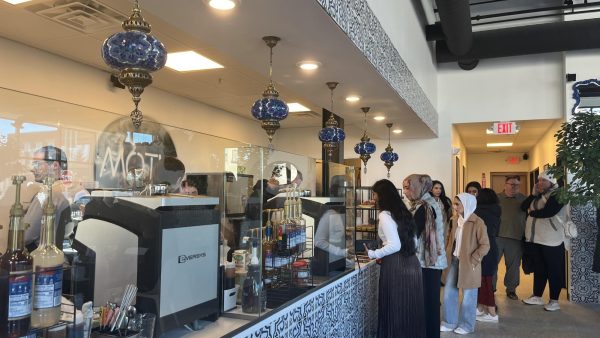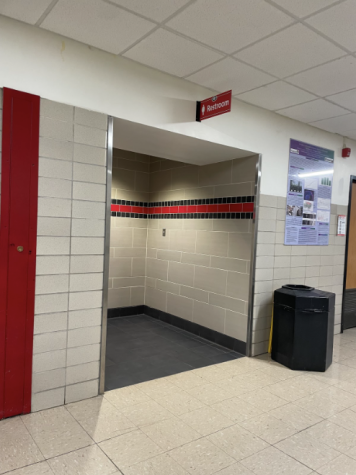Student Search Service: Help or Hindrance?
During seventh period the other day, I was attempting to revise a lab on the behavior of isopods when suddenly, the warning rang out. I stopped cold.
It was an email from St. Norbert’s, one that told me about a future open house. But a moment after this brave messenger ventured on my screen, the invading troops arrived: five emails, from other universities of all shapes and sizes. Not for the first time that month, or that week, or even that day, I cursed the College Board.
When students take the PSAT their junior year, they have the option to let the College Board send their test scores and information to universities in a transaction that earns the so-called “non-profit” millions of dollars annually. This is known formally as the Student Search Service. Most students, myself included, agree blindly, hoping that colleges will take notice at a time where the anxiety of application season first sets in.
And it does start that way, truly. I would open letters from Kalamazoo and Gustavus Adolphus and Notre Dame and marvel at how they chose me, of all people, to offer this bland, forgettable compliment on my academic abilities. I would get emails from places I had never heard of and file them away in a Gmail folder labeled “College.” I even began a list of the colleges that had contacted me, one that now hangs half-finished and forgotten on our refrigerator.
But eventually, I settled into a state of irritation at the sheer quantity of advertising coming my way, an irritation that only increased when I began actually applying to schools. I’m only applying to four schools, but the ads keep coming from literally everyone else.
From Stevens Institute of Technology: “Sofia, I’m looking forward to providing you with an admission decision to Stevens Institute of Technology.”
From Sewanee: “Your interest in Sewanee is enough to make us say, Yea, Sewanee’s Right!”
(I’ve never once expressed interest in either of these universities.)
On the day that the FAFSA opened, I got an avalanche of emails—something around 25 messages, all from different colleges—reminding me that yes, indeed, the FAFSA was open. They even arrived at the exact same time. It was time for me to file the FAFSA to complete my nonexistent application to Augustana.
Several times I’ve ripped up another bland, uninspiring card with a generic-looking campus on the front and thought, “Hey, don’t you think it’s a little late for me to start applying here?”
I’m not a trained marketer, but I am the intended target of these ads, and I can therefore speak to the fact that they don’t work. My Gmail gets so clogged with emails saying the exact same thing that I have to delete them as soon as they arrive, or my inbox will be inundated by the end of the school day. Several students I’ve complained to about this dilemma have shown me inboxes filled with hundreds, even thousands of emails from schools that are left unread.
And then there’s the physical mail. Covered in generic photos of leafy campuses and strategically arranged students of color, the vast majority of university marketing teams seem to think that students are so desperate to pursue higher education that they will be entranced by taglines such as “Your Future, Our Focus” (NIU) and “Crossroads of You” (Butler). It’s all the same, and this does nothing to draw curious students to the school.
The best marketing I’ve received, however, follows the rule of quality over quantity. The University of Chicago, for instance, has sent me about eight pieces of physical mail since the end of my junior year, and each is creative, beautiful, and memorable. The subject line of their first email was “Dinosaurs!!” at a time where every other university’s was “Request your brochure today!”
UChicago, of course, does not need to spend as much of their budget on attracting students when 34,000 bright students applied last year. It’s true that COVID has severely hurt smaller colleges’ ability to fill seats. But at the same time, receiving the same formulaic brochure from ten small schools does nothing to help their cause.
The Student Search Service is presented as a way for students to connect with colleges prior to application. Sometimes this works—in fact, advertising from the Student Search Service helped me narrow my list of schools and take a second glance at places that I had never considered before. However, colleges often respond to their purchase of names and test scores with rather too much vigor, like a lovesick teenager trying their hardest to seduce an obviously disinterested peer.
The concept is there, but the execution, without any sort of restraint, regulation, or tact, demonstrates the flaws in what could be a wonderful system. If opting out of the program was an easy option, or if students were able to go onto the College Board website and customize the type of colleges and programs they’d like to hear from, perhaps the disdain for stacks of vague advertising could be avoided.
So respectfully, Student Search Service, let me say it plainly: we’re just not that into you.

Sofia is a senior and in her fourth year with the Echo as the Copy Editor and Writer. Sofia is the clarinet section leader in band and the president of...








